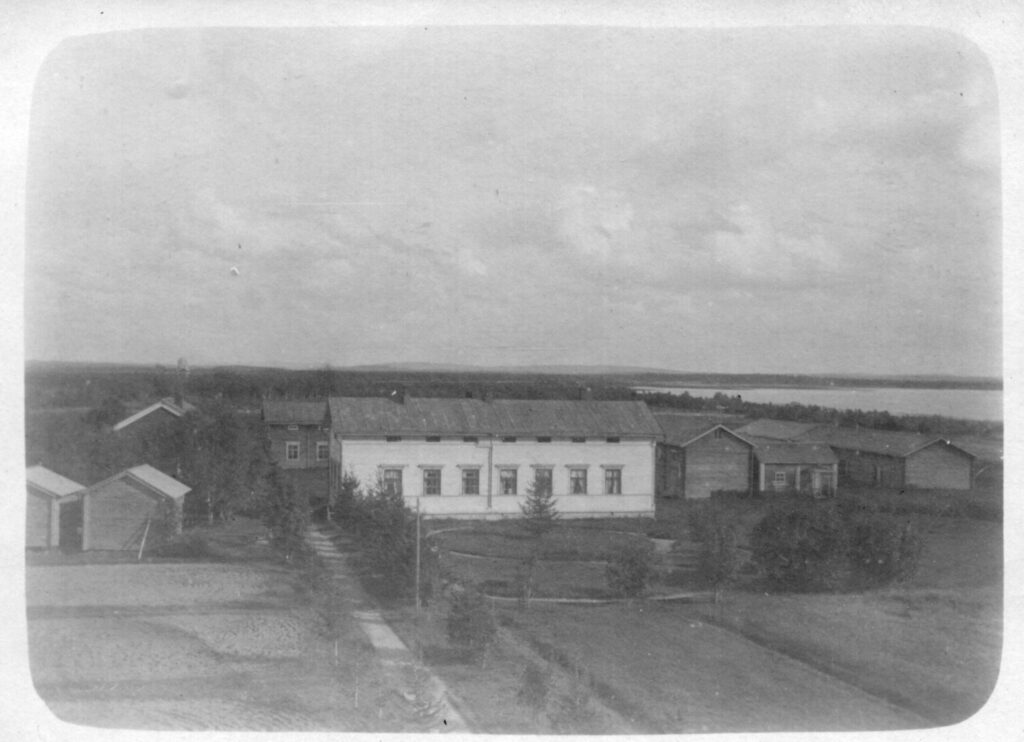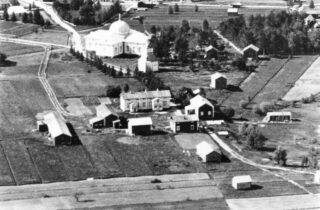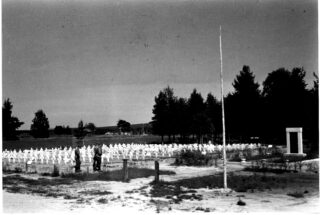After its foundation, the Kuusamo Lapland parish belonged to the diocese of Turku and the diocese of Kemi. In 1849, the congregation was transferred to the diocese of Oulu and to the diocese of Kuopio, founded in 1851, together with other parishes in Lapland. The episcopal seat of Kuopio diocese was moved to Oulu in 1900 and in 1923 its name was changed to Oulu diocese.
Inspections were carried out relatively rarely in the Kuusamo parish. The first bishop’s inspection took place in 1858, previous inspections were often deacons’ inspections. From time to time, the Kuusamo parish might be inspected in connection with the bishop’s inspections of other parishes, for example in Oulu or Pudasjärvi.
The administration was handled in parish meetings led by the vicar and in meetings organised by trustees, i.e., the church council. At the end of the 17th century, Sixmen were elected, whose task was to supervise the construction projects of the congregation and the related work duties, as well as the spiritual and moral life of the villages. In addition to them, the church council included the church master, or churchwarden, chosen by the parish meeting. He took care of the communion utensils, participated in property inspections, and also carried the key to the church chest. Money and documents were kept in the church chest. Membership of the church council tended to be passed down from father to son, as was the job of the bellringer.
The priests were assisted by church servants, at first the bellringers. Their task was to assist in church services as a pre-singer and to teach children literacy and Christian doctrine. Krister Luukkonen was the first bellringer in Kuusamo, followed by Petter Bohm, Pentti Kela, Yrjö Karjalainen, Juho Karjalainen, Johan Brännholm, Sakari Hänninen, Sihveri Hänninen and Herman Määttä. Antti Ahonen worked as the first church watcher, or sacristan, from 1764, and after him Sihveri Kela, Erkki Lämsä and Iikka Leskelä.
The parish has already had cemeteries near the Torangintaipale pulpit. A new cemetery was also reserved for the completed church in Samostenperä. In the past, there have been two cemeteries in Kitka, Sarvisaaari and Sänkisaari cemeteries. They have partly been temporary burial sites, from which the bodies have mostly been transported to actual cemeteries.
Today, the parish has five cemeteries: the Old Cemetery and the Heroes’ Cemetery next to the church, the Nilo Cemetery, and the Ristikangas Cemetery. In addition, there is Käylä’s old cemetery behind the border region church and Saukkoniemi cemetery. People from Kuusamo are still buried in the Sänkisaari cemetery in Vasaraperä, which is maintained by the local district council. People go to the island by boat in the summer.


